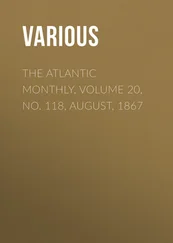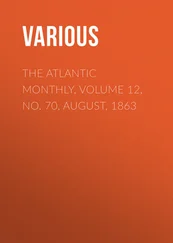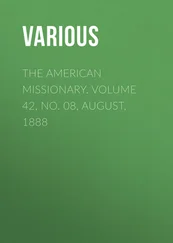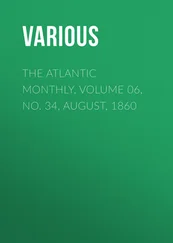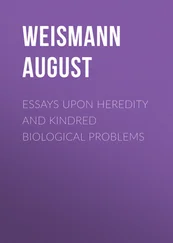August Weismann - Studies in the Theory of Descent, Volume I
Здесь есть возможность читать онлайн «August Weismann - Studies in the Theory of Descent, Volume I» — ознакомительный отрывок электронной книги совершенно бесплатно, а после прочтения отрывка купить полную версию. В некоторых случаях можно слушать аудио, скачать через торрент в формате fb2 и присутствует краткое содержание. Жанр: foreign_antique, foreign_prose, на английском языке. Описание произведения, (предисловие) а так же отзывы посетителей доступны на портале библиотеки ЛибКат.
- Название:Studies in the Theory of Descent, Volume I
- Автор:
- Жанр:
- Год:неизвестен
- ISBN:нет данных
- Рейтинг книги:4 / 5. Голосов: 1
-
Избранное:Добавить в избранное
- Отзывы:
-
Ваша оценка:
- 80
- 1
- 2
- 3
- 4
- 5
Studies in the Theory of Descent, Volume I: краткое содержание, описание и аннотация
Предлагаем к чтению аннотацию, описание, краткое содержание или предисловие (зависит от того, что написал сам автор книги «Studies in the Theory of Descent, Volume I»). Если вы не нашли необходимую информацию о книге — напишите в комментариях, мы постараемся отыскать её.
Studies in the Theory of Descent, Volume I — читать онлайн ознакомительный отрывок
Ниже представлен текст книги, разбитый по страницам. Система сохранения места последней прочитанной страницы, позволяет с удобством читать онлайн бесплатно книгу «Studies in the Theory of Descent, Volume I», без необходимости каждый раз заново искать на чём Вы остановились. Поставьте закладку, и сможете в любой момент перейти на страницу, на которой закончили чтение.
Интервал:
Закладка:
The facts agree with this conclusion, inasmuch as most butterflies which exhibit seasonal dimorphism hibernate in the pupa stage. Thus, this is the case with all the Pierinæ , with Papilio Machaon , P. Podalirius , and P. Ajax , as well as with Araschnia Levana . Nevertheless, it cannot be denied that seasonal dimorphism occurs also in some species which do not hibernate as pupæ but as caterpillars; as, for instance, in the strongly dimorphic Plebeius Amyntas . But such cases can be explained in a different manner.
Again, the formation of a climatic variety – and as such must we regard seasonally dimorphic forms – by no means entirely depends on the magnitude of the difference between the temperature which acts on the pupæ of the primary and that which acts on those of the secondary form; it rather depends on the absolute temperature which the pupæ experience. This follows without doubt from the fact that many species, such as our common Swallow-tail ( Papilio Machaon ), and also P. Podalirius , in Germany and the rest of temperate Europe, show no perceptible difference of colour between the first generation, the pupæ of which hibernate, and the second generation, the pupal period of which falls in July, whereas the same butterflies in South Spain and Italy are to a small extent seasonally dimorphic. Those butterflies which are developed under the influence of a Sicilian summer heat likewise show climatic variation to a small extent. The following consideration throws further light on these conditions. The mean summer and winter temperatures in Germany differ by about 14.9° R.; this difference being therefore much more pronounced than that between the German and Sicilian summer, which is only about 3.6° R. Nevertheless, the winter and summer generations of P. Podalirius are alike in Germany, whilst the Sicilian summer generation has become a climatic variety. The cause of this change must therefore lie in the small difference between the mean summer temperatures of 15.0° R. (Berlin) and 19.4° R. (Palermo). According to this, a given absolute temperature appears to give a tendency to variation in a certain direction, the necessary temperature being different for different species. The latter statement is supported by the facts that, in the first place, in different species there are very different degrees of difference between the summer and winter forms; and secondly, many digoneutic species are still monomorphic in Germany, first becoming seasonally dimorphic in Southern Europe. This is the case with P. Machaon and P. Podalirius , as already mentioned, and likewise with Polyommatus Phlæas . Zeller in 1846–47, during his journey in Italy, recognized as seasonally dimorphic in a small degree a large number of diurnal Lepidoptera which are not so in our climate. 35
In a similar manner the appearance of seasonal dimorphism in species which, like Plebeius Amyntas , do not hibernate as pupæ, but as caterpillars, can be simply explained by supposing that the winter generation was the primary form, and that the increase in the summer temperature since the glacial period was sufficient to cause this particular species to become changed by the gradual interpolation of a second generation. The dimorphism of P. Amyntas can, nevertheless, be explained in another manner. Thus, there may have been a disturbance of the period of development in the manner already indicated, the species which formerly hibernated in the pupal stage becoming subsequently disturbed in its course of development by the interpolation of a summer generation, and hibernating in consequence in the caterpillar state. Under these circumstances we must regard the present winter form (var. Polysperchon ) as having been established under the influence of a winter climate, this form, since the supposed disturbance in its development, having had no reason to become changed, the spring temperature under which its pupation now takes place not being sufficiently high. The interpolated second generation on the other hand, the pupal period of which falls in the height of summer, may easily have become formed into a summer variety.
This latter explanation agrees precisely with the former, both starting with the assumption that in the present case, as in that of A. Levana and the Pierinæ , the winter form is the primary one, so that the dimorphism proceeds from the said winter form and does not originate the winter but the summer form, as will be explained. Whether the winter form has been produced by the action of the winter or spring temperature is immaterial in judging single cases, inasmuch as we are not in a position to state what temperature is necessary to cause any particular species to become transformed.
The reverse case is also theoretically conceivable, viz., that in certain species the summer form was the primary one, and by spreading northwards a climate was reached which still permitted the production of two generations, the pupal stage of one generation being exposed to the cold of winter, and thus giving rise to the production of a secondary winter form. In such a case hibernation in the pupal state would certainly give rise to seasonal dimorphism. Whether these conditions actually occur, appears to me extremely doubtful; but it may at least be confidently asserted that the first case is of far more frequent occurrence. The beautiful researches of Ernst Hoffmann 36furnish strong evidence for believing that the great majority of the European butterflies have immigrated, not from the south, but from Siberia. Of 281 species, 173 have, according to Hoffmann, come from Siberia, 39 from southern Asia, and only 8 from Africa, whilst during the greatest cold of the glacial period, but very few or possibly no species existed north of the Alps. Most of the butterflies now found in Europe have thus, since their immigration, experienced a gradually increasing warmth. Since seasonal dimorphism has been developed in some of these species, the summer form must in all cases have been the secondary one, as the experiments upon the reversion of Pieris Napi and Araschnia Levana have also shown.
All the seasonally dimorphic butterflies known to me are found in Hoffmann’s list of Siberian immigrants, with the exception of two species, viz., Euchloe Belemia , which is cited as an African immigrant, and Pieris Krueperi , which may have come through Asia Minor, since at the present time it has not advanced farther west than Greece. No considerable change of climate can be experienced by migrating from east to west, so that the seasonal dimorphism of Pieris Krueperi can only depend on a cause similar to that which affected the Siberian immigrants, that is, the gradual increase of temperature in the northern hemisphere since the glacial period. In this species also, the winter form must be the primary one. In the case of E. Belemia , on the other hand, the migration northwards from Africa certainly indicates removal to a cooler climate, which may have originated a secondary winter form, even if nothing more certain can be stated. We know nothing of the period of migration into southern Europe; and even migration without climatic change is conceivable, if it kept pace with the gradual increase of warmth in the northern hemisphere since the glacial epoch. Experiments only would in this case be decisive. If the summer generation, var. Glauce , were the primary form, it would not be possible by the action of cold on the pupæ of this brood to produce the winter variety Belemia , whilst, on the other hand, the pupæ of the winter generation by the influence of warmth would be made to revert more or less completely to the form Glauce . It is by no means to be understood that the species would actually comport itself in this manner. On the contrary, I am of opinion that in this case also, the winter form is primary. The northward migration (from Africa to south Spain) would be quite insufficient, and the winter form is now found in Africa as well as in Spain.
Читать дальшеИнтервал:
Закладка:
Похожие книги на «Studies in the Theory of Descent, Volume I»
Представляем Вашему вниманию похожие книги на «Studies in the Theory of Descent, Volume I» списком для выбора. Мы отобрали схожую по названию и смыслу литературу в надежде предоставить читателям больше вариантов отыскать новые, интересные, ещё непрочитанные произведения.
Обсуждение, отзывы о книге «Studies in the Theory of Descent, Volume I» и просто собственные мнения читателей. Оставьте ваши комментарии, напишите, что Вы думаете о произведении, его смысле или главных героях. Укажите что конкретно понравилось, а что нет, и почему Вы так считаете.


